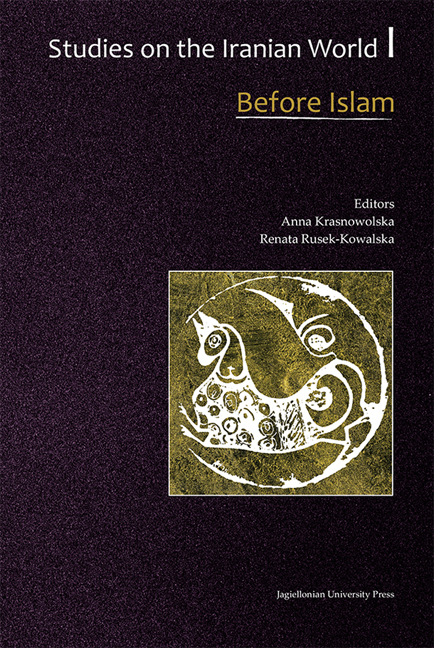Book contents
- Frontmatter
- Contents
- Foreword
- Linguistics
- Literature
- Religion
- Aspects of Hymnology in the Manichaean Community in Turfan
- Arǝdvī Sūrā Anāhitā: Considerations on the Greek ἀρχἡ
- Ohrmazd's Plan for Creation according to Book Three of the Denkard
- The Pahlavi Translation of Yašt 3
- On the Old Iranian Social Space and Its Relation to the Time Ordering System
- History
- Archaeology
Aspects of Hymnology in the Manichaean Community in Turfan
from Religion
Published online by Cambridge University Press: 12 January 2018
- Frontmatter
- Contents
- Foreword
- Linguistics
- Literature
- Religion
- Aspects of Hymnology in the Manichaean Community in Turfan
- Arǝdvī Sūrā Anāhitā: Considerations on the Greek ἀρχἡ
- Ohrmazd's Plan for Creation according to Book Three of the Denkard
- The Pahlavi Translation of Yašt 3
- On the Old Iranian Social Space and Its Relation to the Time Ordering System
- History
- Archaeology
Summary
SUMMARY
This paper covers various aspects of the hymnology in the Middle Iranian languages Middle Persian and Parthian of the Manichaean community in Turfan. The presentation of the texts in the manuscripts, the use of initial letters, the indication of melodies, and features of cantillation are covered. The origin of the features used in cantillation is discussed and compared with some features of Armenian xaz. A farther agreement with Armenian manuscripts is in the orientation of images.
Manichaean community life was dominated by hymns. The list or index of hymns in the mahr nāmag ‘book of hymns,’ one of the folios in the bifolio M 1, gives a very high number of hymns and this is confirmed by the great number of hymns and fragments of hymns in the Turfan Collection in Berlin. Though the Manichaean community in Turfan was in a Turkish/Uigur speaking area where Sogdian (and other languages) had some currency, the community used Middle Persian and Parthian litanies, hymn-cycles and a great number of individual hymns. Since the only other Manichaean community from which we have extensive original texts, the Egyptian one with its Coptic texts, also used a large number of hymns it is quite clear that hymns played a central role in Manichaean community life and that many hymns will go back to Aramaic originals used by the community in Mesopotamia.
Many examples of individual Middle Persian and Parthian verse texts and of hymn-cycles have been published in the more than hundred years since F.W.K. Müller was able to announce the discovery of original Manichaean texts in the textual materials recovered by the First German expedition to Turfan 1902–1904 on which three others followed. The desolate state of many fragments and the fact that no complete book was among the damaged remains has meant that much painstaking work had to be done in order to reconstruct longer texts from the fragments (e.g. the Parthian Hymncycles reconstructed by M. Boyce) whereas shorter texts are often quite well preserved (e.g. the individual hymns, many of high quality published by Henning from Andreas’ papers, Andreas-Henning 1932–4). The two hymncycles published by Boyce 1954, Angad rōšnān and Huyadagmān, are in Parthian, but extensive fragments of a Middle Persian cycle, the Gōwišn ī grīw zīndag ‘Discourse of the Living Soul’ are preserved and have been prepared for imminent publication by W. Sundermann.
- Type
- Chapter
- Information
- Studies on the Iranian World: Before IslamMedieval and Modern, pp. 121 - 138Publisher: Jagiellonian University PressPrint publication year: 2015



